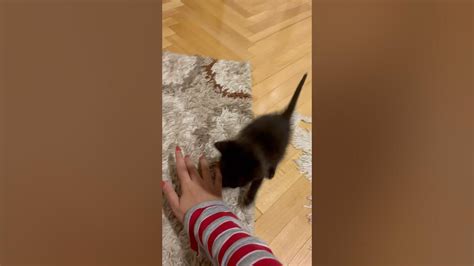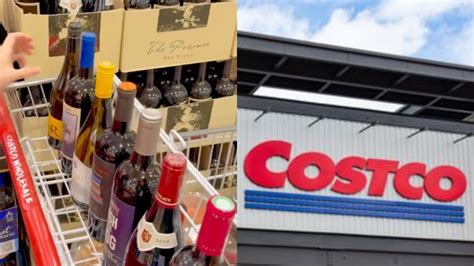
A woman’s viral TikTok video showcasing her neighbors’ seemingly cluttered backyard has sparked online debate after revealing hidden treasures and prompting a property dispute over a shared alleyway, leading to a request to add a “T” intersection to the existing road.
A TikTok user, known as @interiorbyjessicas, ignited a social media firestorm after posting a video tour of her neighbors’ backyard, initially perceived as a junkyard. The video, which quickly went viral, revealed that what appeared to be random piles of debris actually contained valuable antique furniture, architectural salvage, and other potentially lucrative items. The revelation has not only changed perceptions of the neighbors’ property but has also brought to light a long-standing dispute over access to a shared alleyway, culminating in a formal request to incorporate a “T” intersection that would impact the existing road structure. The request to the city planning commission underscores the escalating tensions and highlights the complex property rights issues at play.
The initial TikTok video, viewed millions of times, shows Jessica walking along the fence line separating her property from her neighbors. Her commentary expresses initial surprise and then growing fascination as she identifies various items, including vintage bathtubs, ornate iron gates, and stacks of reclaimed wood. “I thought it was just a junkyard, but it turns out they’re sitting on a goldmine,” Jessica states in the video, her tone a mix of disbelief and awe. The video quickly gained traction, with users commenting on the potential value of the items and speculating about the neighbors’ intentions. Some praised the neighbors for their apparent collecting prowess, while others criticized the perceived mess and potential property value impact.
However, the situation took a more serious turn when Jessica revealed in subsequent videos that the discovery had exacerbated an existing conflict over access to a shared alleyway that runs behind their properties. According to Jessica, her neighbors have historically used the alleyway to transport items to and from their backyard, causing disruption and occasional obstruction. With the newfound attention on the potential value of their collection, the neighbors have reportedly increased their activity in the alleyway, leading to further friction. This escalation prompted Jessica and other residents to formally request the city planning commission to consider adding a “T” intersection to the road accessing the alleyway, effectively restricting access and formalizing property lines.
The request to add a “T” intersection is not merely a matter of aesthetics or convenience; it represents a significant alteration to the existing infrastructure and has potentially far-reaching implications for property rights and access for all residents who use the alleyway. The city planning commission is currently reviewing the request, taking into consideration factors such as traffic flow, property values, and the historical use of the alleyway. The outcome of this review will likely set a precedent for similar property disputes in the area and could have a lasting impact on the community.
The neighbors, who have chosen to remain anonymous, have declined multiple requests for comment. However, sources close to them suggest that they have been collecting these items for years, with the intention of eventually restoring and selling them. They reportedly view the alleyway as a crucial access point for their business and argue that restricting access would severely impact their ability to operate. Their perspective highlights the complexities of the situation and underscores the need for a fair and equitable resolution.
The case has become a lightning rod for broader discussions about property rights, neighborhood aesthetics, and the impact of social media on local disputes. Legal experts weigh in that the legal framework surrounding shared alleyways and easements varies widely depending on local ordinances and historical precedents. In many cases, property owners have a right to reasonable access to their property, but that right is not absolute and can be subject to restrictions if it infringes on the rights of others. The city planning commission will need to carefully consider these legal principles as they weigh the competing interests of the parties involved.
The controversy surrounding the “junk” and the subsequent request for a “T” intersection serves as a microcosm of larger societal trends, including the increasing popularity of collecting and repurposing vintage items, the growing awareness of property rights, and the pervasive influence of social media in shaping public opinion and influencing local decision-making. As the city planning commission deliberates, the outcome of this case will undoubtedly be closely watched by property owners, legal professionals, and community members alike, serving as a cautionary tale about the potential consequences of seemingly innocuous backyard collections and the power of social media to amplify local disputes.
The situation is further complicated by the potential environmental concerns associated with the accumulation of large quantities of materials in a residential area. While the neighbors may be collecting valuable items, the sheer volume of materials could pose risks such as fire hazards, pest infestations, and soil contamination. Local environmental regulations may also come into play, requiring the neighbors to properly manage and dispose of certain materials. The city planning commission will need to consider these environmental factors as part of their review process.
Furthermore, the dispute highlights the challenges of balancing individual property rights with the collective interests of the community. While property owners have the right to use their property as they see fit, that right is not unlimited and must be exercised in a way that does not unduly infringe on the rights of others. In this case, the neighbors’ collection may be viewed as a nuisance by some residents, while others may see it as a harmless expression of personal taste. The city planning commission will need to weigh these competing perspectives and strive to find a solution that respects the rights of all parties involved.
The role of social media in this dispute cannot be overstated. The initial TikTok video sparked a chain reaction that has amplified the conflict and brought it to the attention of a wider audience. While social media can be a powerful tool for raising awareness and promoting transparency, it can also exacerbate tensions and contribute to the spread of misinformation. In this case, the viral nature of the video has likely put additional pressure on the city planning commission to resolve the dispute quickly and fairly.
Adding to the complexity is the potential for legal challenges regardless of the city planning commission’s decision. If the request for a “T” intersection is approved, the neighbors could file a lawsuit arguing that their property rights have been violated. Conversely, if the request is denied, Jessica and other residents could sue the city, claiming that it has failed to protect their property values and quality of life. These potential legal battles could drag on for years and would likely be costly for all parties involved.
To mitigate the risks of further escalation and legal action, some experts suggest that the parties involved should consider mediation or arbitration. These alternative dispute resolution methods can provide a more collaborative and less adversarial forum for resolving the conflict. A neutral mediator can help the parties understand each other’s perspectives and identify potential solutions that meet their needs. Arbitration, on the other hand, involves a neutral arbitrator who makes a binding decision based on the evidence presented by both sides.
Regardless of the path forward, it is clear that the dispute over the “junk” and the “T” intersection will have lasting implications for the community. The case serves as a reminder of the importance of clear communication, mutual respect, and a willingness to compromise in resolving neighborhood conflicts. It also underscores the need for local governments to have clear and enforceable regulations regarding property maintenance and access to shared spaces. The situation is a complex interplay of property rights, aesthetic preferences, community harmony, and the ever-present influence of social media, underscoring the challenges of modern neighborhood living. The city planning commission’s decision will set a precedent for handling similar disputes in the future and will shape the character of the community for years to come.
The debate also brings up questions about the definition of “junk” versus “treasure.” What one person considers worthless, another might see as a valuable antique or a piece of art. This subjective element adds another layer of complexity to the situation. If the neighbors are indeed collecting items with the intention of restoring and selling them, their activity could be considered a legitimate business, which may be subject to different regulations than simply accumulating junk. The city planning commission will need to consider the neighbors’ intentions and the potential economic impact of their activities as part of their review.
Furthermore, the neighbors’ right to privacy is also a factor to consider. While their backyard is visible from Jessica’s property, they may have an expectation of privacy regarding their personal belongings and activities. The act of filming and sharing their backyard on social media could be seen as an invasion of privacy, which could potentially give rise to legal claims. This highlights the ethical considerations involved in using social media to document and share information about neighbors and their property.
The long-term implications of this dispute extend beyond the immediate parties involved. The controversy could have a chilling effect on other residents who may be hesitant to express their personal tastes or engage in hobbies that are perceived as unconventional. It could also lead to increased scrutiny and regulation of property maintenance and aesthetics, potentially stifling creativity and individuality. The city planning commission will need to consider these broader implications as they weigh the competing interests of the parties involved.
To ensure a fair and equitable resolution, the city planning commission should consider conducting a thorough investigation of the facts, including a site visit to the properties in question. They should also solicit input from all interested parties, including the neighbors, Jessica, and other residents who use the alleyway. The commission should also consult with legal experts and environmental professionals to ensure that their decision is consistent with applicable laws and regulations.
The outcome of this case could also have implications for the real estate market in the area. If the request for a “T” intersection is approved, it could potentially increase property values for residents who benefit from the restricted access to the alleyway. Conversely, it could decrease property values for the neighbors if it impairs their ability to operate their business. The uncertainty surrounding the dispute could also deter potential buyers from investing in the area.
In addition to the legal and economic considerations, the city planning commission should also consider the social and emotional impact of their decision. The dispute has already created significant tension and animosity between neighbors, and the commission’s decision could either exacerbate or alleviate these feelings. It is important for the commission to communicate their decision in a clear and transparent manner and to explain the reasoning behind their decision.
The situation also raises questions about the role of community associations and neighborhood organizations in resolving local disputes. These organizations can provide a forum for residents to discuss their concerns and work together to find solutions. They can also serve as a liaison between residents and local government officials. In this case, a strong and active community association could have helped to prevent the dispute from escalating to the point where it required the intervention of the city planning commission.
Ultimately, the resolution of this dispute will require a combination of legal expertise, community engagement, and a willingness to compromise. The city planning commission must carefully balance the competing interests of the parties involved and strive to find a solution that is fair, equitable, and sustainable in the long term. The outcome of this case will serve as a precedent for handling similar disputes in the future and will shape the character of the community for years to come. The case also serves as a cautionary tale about the importance of clear communication and mutual respect in maintaining harmonious relationships with neighbors. It underscores the need for individuals to be mindful of the impact of their actions on others and to be willing to work together to resolve conflicts in a constructive manner. The power of social media to amplify local disputes highlights the importance of responsible online behavior and the need to think critically about the information we consume and share. As the city planning commission deliberates, the eyes of the community, and indeed the internet, are watching, hoping for a resolution that restores peace and harmony to this once-quiet neighborhood.
The potential for mediation remains a viable option. A skilled mediator could help the neighbors and Jessica understand each other’s perspectives and explore potential solutions that address their concerns. For example, they could agree on a schedule for the neighbors to use the alleyway that minimizes disruption to Jessica and other residents. They could also agree on measures to prevent the accumulation of excessive materials in the backyard and to address any environmental concerns. Mediation could also provide a forum for the parties to address underlying issues that may be contributing to the conflict, such as differences in lifestyle or communication styles.
Regardless of the outcome, the case highlights the importance of fostering a sense of community and shared responsibility. When residents feel a sense of connection and belonging, they are more likely to be willing to work together to resolve conflicts and to support each other. Community events, neighborhood watch programs, and other initiatives can help to build relationships and to create a more positive and supportive environment for all.
The situation also underscores the need for clear and comprehensive regulations regarding property maintenance and access to shared spaces. These regulations should be developed with input from residents and should be enforced fairly and consistently. Clear regulations can help to prevent disputes from arising in the first place and can provide a framework for resolving conflicts when they do occur. The city planning commission should review its existing regulations to ensure that they are adequate to address the challenges of modern neighborhood living.
In the end, the resolution of this dispute will depend on the willingness of all parties involved to compromise and to work together in good faith. While legal and regulatory frameworks are important, they cannot replace the need for human understanding and empathy. By listening to each other’s perspectives and by striving to find solutions that meet the needs of all, the neighbors and Jessica can hopefully restore peace and harmony to their community. Frequently Asked Questions (FAQs):
1. What is the central issue in the dispute between the neighbors?
The central issue revolves around a woman’s discovery of what she believes to be valuable items in her neighbors’ seemingly cluttered backyard, which has exacerbated an existing dispute over the use of a shared alleyway. This has led to a formal request to add a “T” intersection to the road accessing the alleyway, potentially restricting access and formalizing property lines.
2. Why did the TikTok user, Jessica, post a video of her neighbors’ backyard?
Jessica initially posted the video out of surprise and curiosity, intending to showcase what she perceived as a junkyard. However, as she identified potentially valuable items, her tone shifted to one of fascination, prompting her to share her discovery with her followers. The video went viral, drawing attention to the neighbors’ collection and sparking debate about its value and impact on the neighborhood.
3. What is the significance of the request to add a “T” intersection to the road?
The request to add a “T” intersection is significant because it represents a formal attempt to restrict access to the shared alleyway that the neighbors have historically used to transport items to and from their backyard. Approving the request would alter existing infrastructure, potentially affecting property rights, traffic flow, and access for other residents who use the alleyway. The city planning commission’s decision will set a precedent for similar property disputes in the area.
4. What are the potential environmental concerns associated with the neighbors’ collection?
The potential environmental concerns include fire hazards, pest infestations, and soil contamination due to the accumulation of large quantities of materials in a residential area. Local environmental regulations may require the neighbors to properly manage and dispose of certain materials to mitigate these risks. The city planning commission must consider these environmental factors as part of their review process.
5. What are some possible solutions to resolve the dispute between the neighbors?
Possible solutions include mediation or arbitration, where a neutral third party can help facilitate communication and explore mutually agreeable resolutions. This could involve establishing a schedule for alleyway usage, implementing measures to address environmental concerns, or exploring alternative access options for the neighbors’ collection. The ultimate goal is to find a solution that respects the rights and interests of all parties involved and restores harmony to the neighborhood.









